Abstract
Angiotensin converting enzyme inhibitors reduce blood pressure without reflex tachycardia, possibly as a result of enhanced hypothesis that this results from the removal of the parasympathetic activity. We examined the vagolytic action of angiotensin II or alternatively by acetylcholinesterase inhibition. Both captopril and [Sar1ala8] angiotensin II, (saralasin), caused modest falls in blood pressure, without increasing heart rate in normotensive subjects. Captopril and saralasin significantly attenuated the vagally mediated heart rate slowing after facial immersion in water. There was a close correlation between the effects produced by captopril and saralasin on the diving reflex. Infusion of subpressor doses of angiotensin II, reversed the hypotensive effect of captopril and returned the bradycardia after facial immersion to placebo level. In vitro neither captopril nor enalapril or lisinopril affected bovine erythrocyte acetylcholinesterase activity. The parasympathetic effect of angiotensin converting enzyme inhibitors appear to reflect a direct consequence of the removal of angiotensin II.
Full text
PDF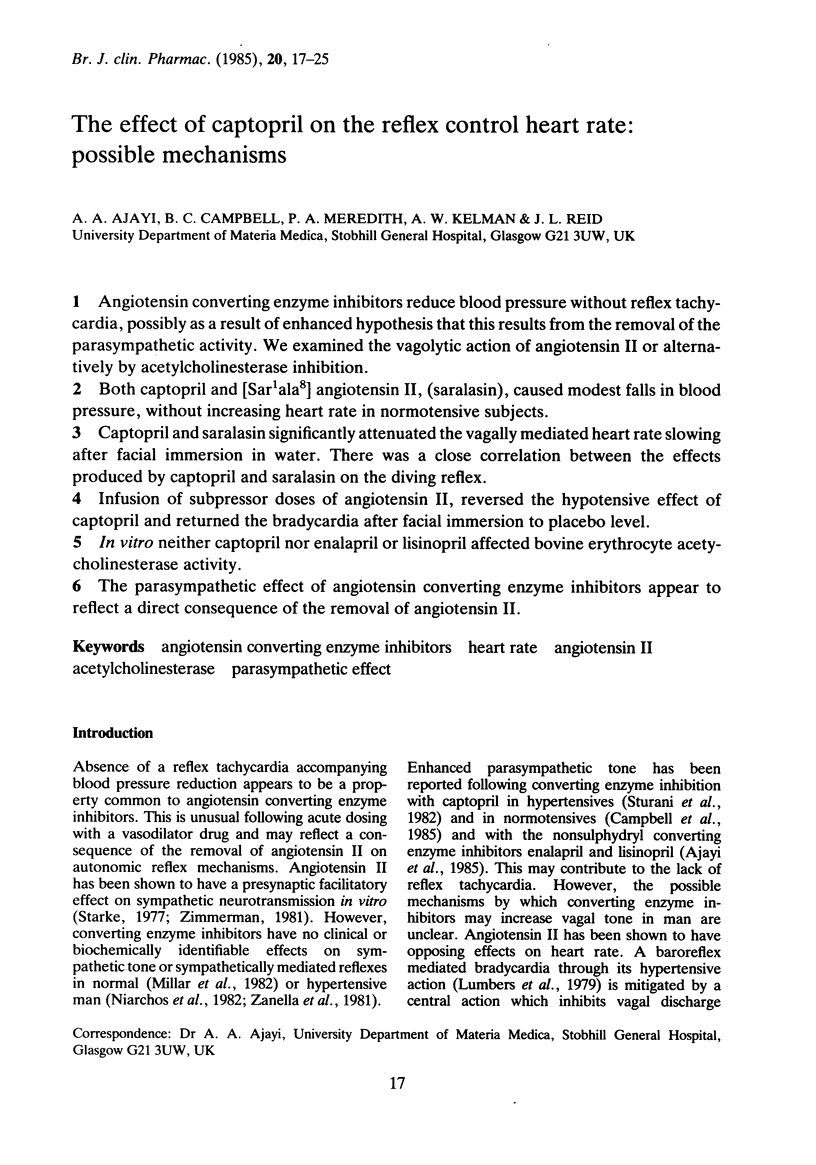
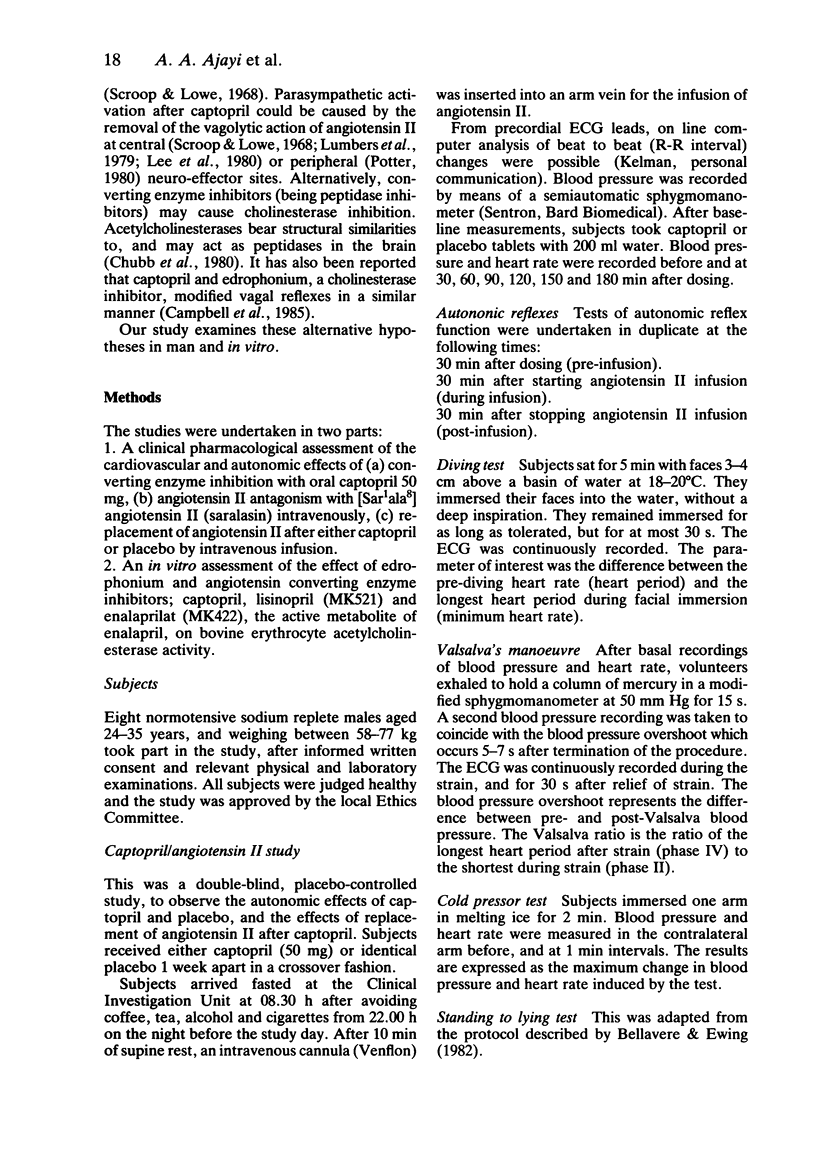
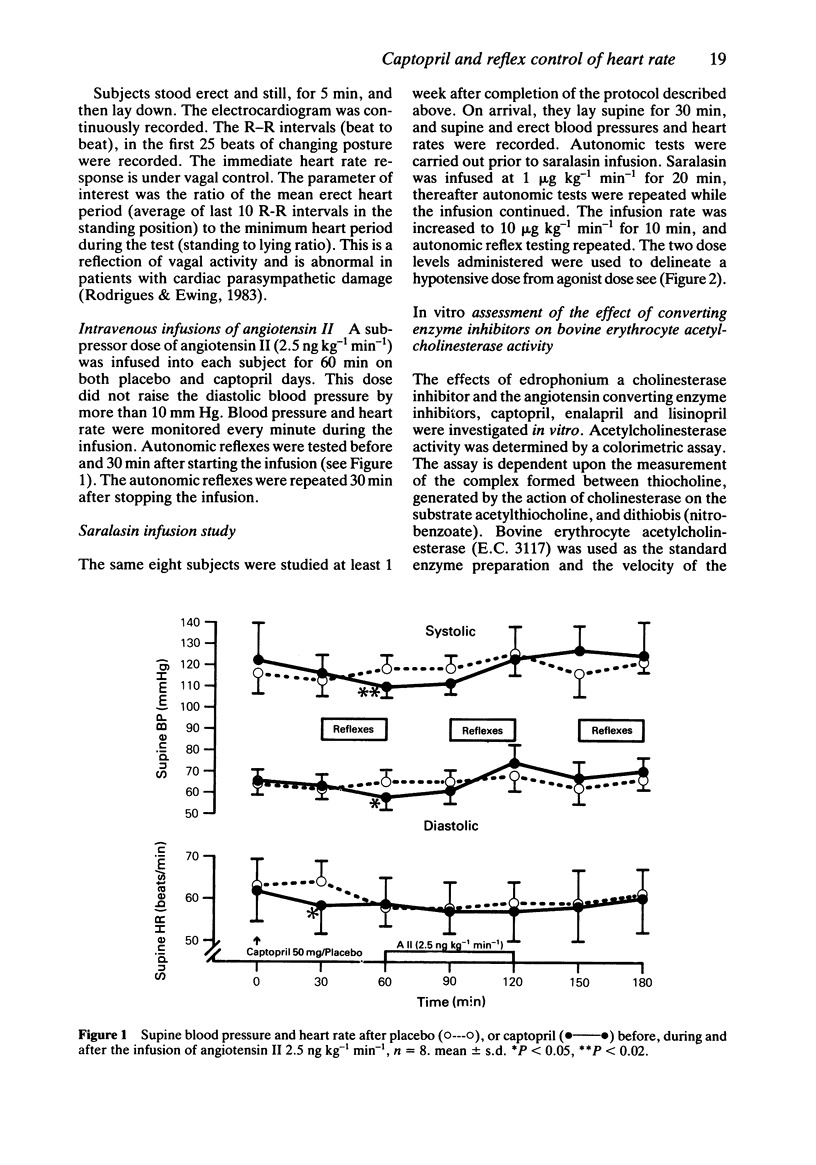

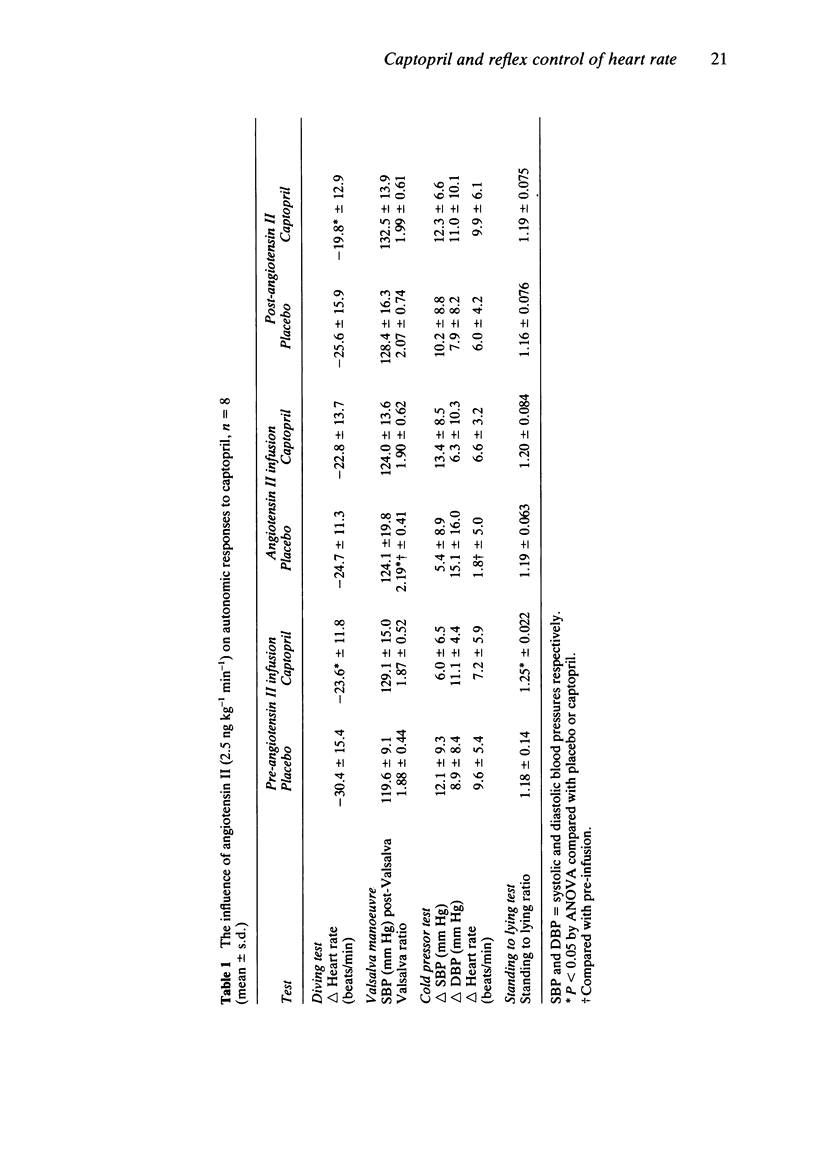
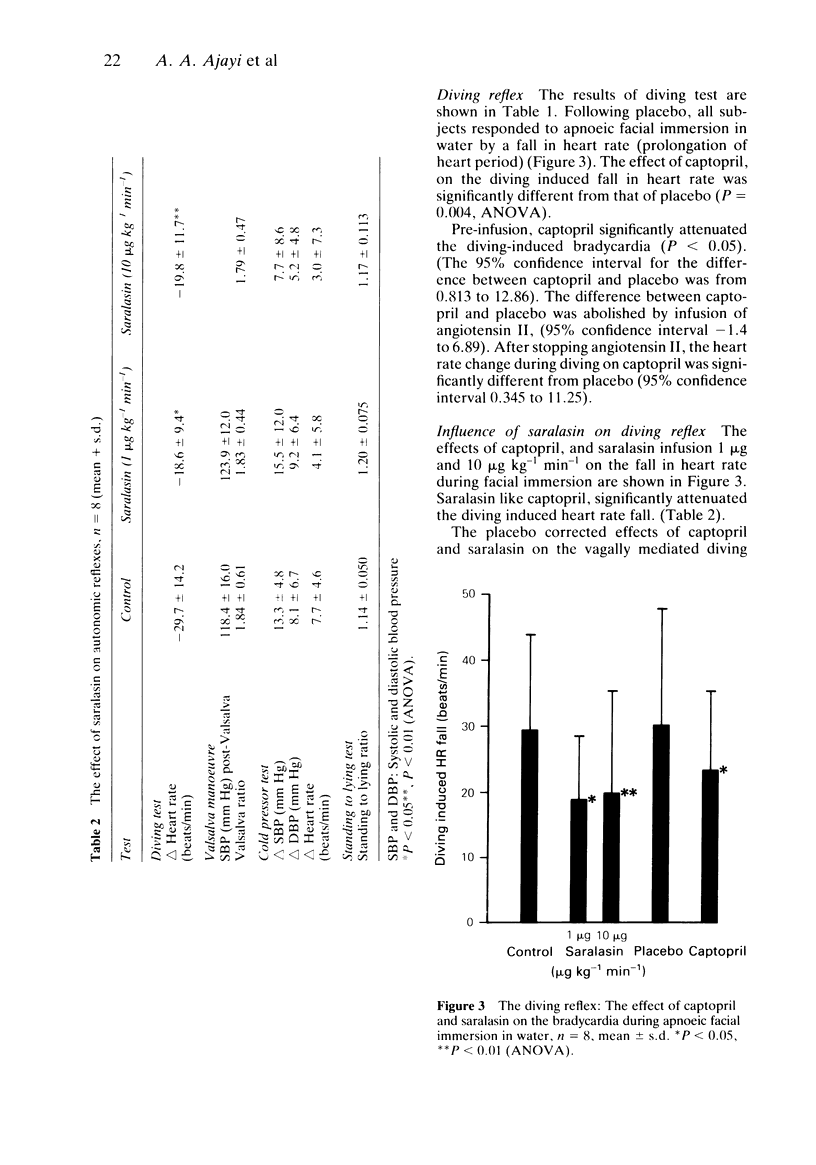
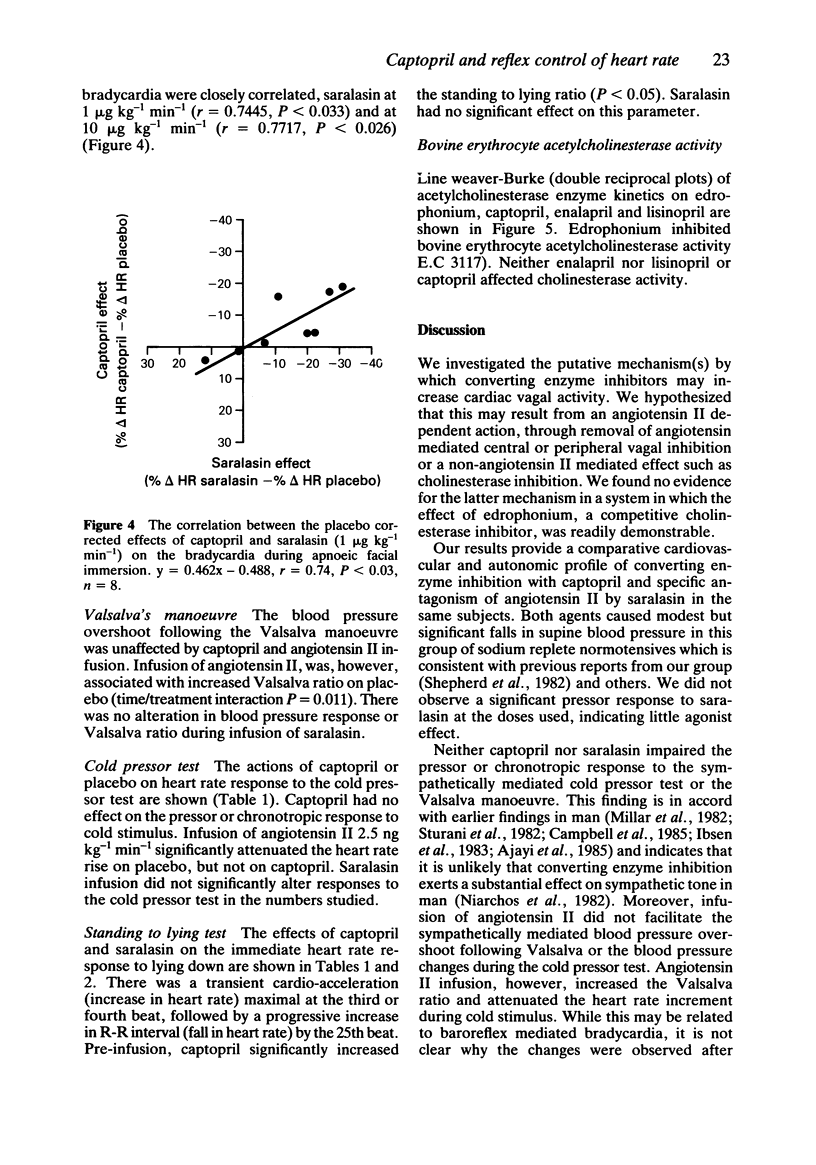

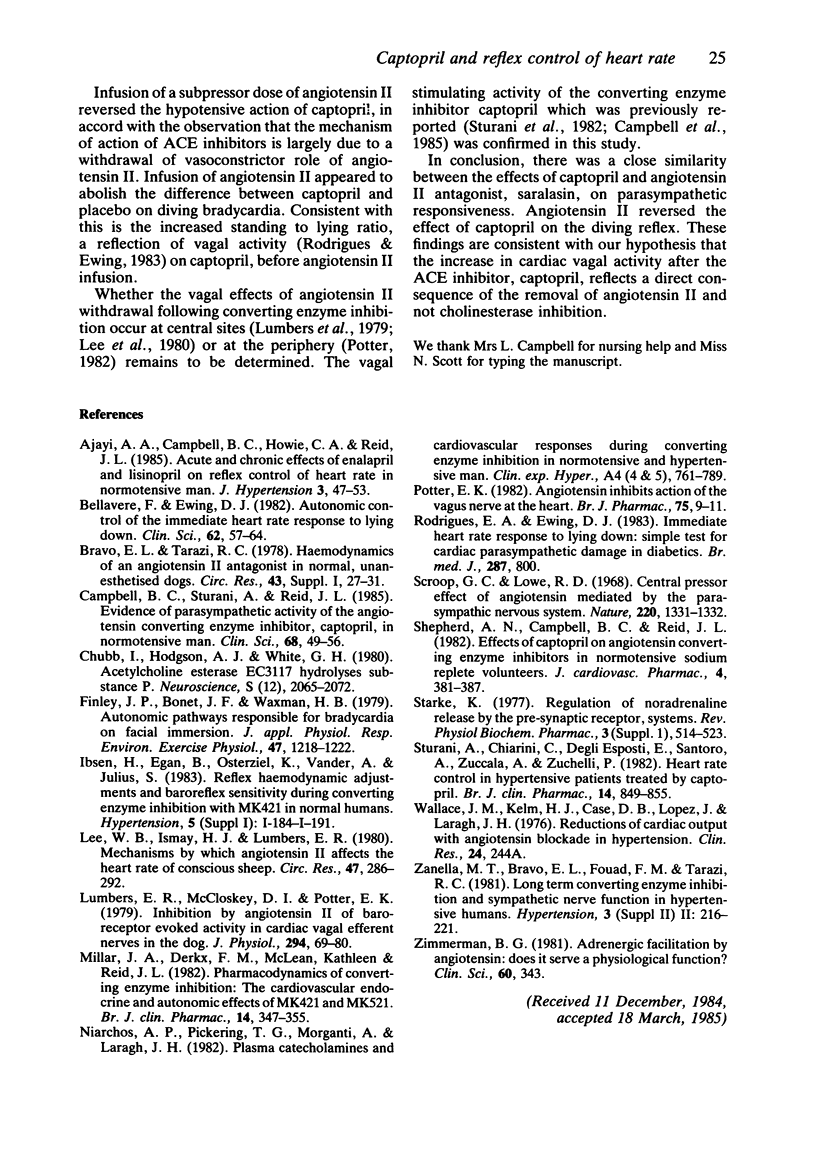
Selected References
These references are in PubMed. This may not be the complete list of references from this article.
- Ajayi A. A., Campbell B. C., Howie C. A., Reid J. L. Acute and chronic effects of the converting enzyme inhibitors enalapril and lisinopril on reflex control of heart rate in normotensive man. J Hypertens. 1985 Feb;3(1):47–53. doi: 10.1097/00004872-198502000-00008. [DOI] [PubMed] [Google Scholar]
- Bellavere F., Ewing D. J. Autonomic control of the immediate heart rate response to lying down. Clin Sci (Lond) 1982 Jan;62(1):57–64. doi: 10.1042/cs0620057. [DOI] [PubMed] [Google Scholar]
- Campbell B. C., Sturani A., Reid J. L. Evidence of parasympathetic activity of the angiotensin converting enzyme inhibitor, captopril, in normotensive man. Clin Sci (Lond) 1985 Jan;68(1):49–56. doi: 10.1042/cs0680049. [DOI] [PubMed] [Google Scholar]
- Chubb I. W., Hodgson A. J., White G. H. Acetylcholinesterase hydrolyzes substance P. Neuroscience. 1980;5(12):2065–2072. doi: 10.1016/0306-4522(80)90124-4. [DOI] [PubMed] [Google Scholar]
- Finley J. P., Bonet J. F., Waxman M. B. Autonomic pathways responsible for bradycardia on facial immersion. J Appl Physiol Respir Environ Exerc Physiol. 1979 Dec;47(6):1218–1222. doi: 10.1152/jappl.1979.47.6.1218. [DOI] [PubMed] [Google Scholar]
- Lee W. B., Ismay M. J., Lumbers E. R. Mechanisms by which angiotensin II affects the heart rate of the conscious sheep. Circ Res. 1980 Aug;47(2):286–292. doi: 10.1161/01.res.47.2.286. [DOI] [PubMed] [Google Scholar]
- Lumbers E. R., McCloskey D. I., Potter E. K. Inhibition by angiotensin II of baroreceptor-evoked activity in cardiac vagal efferent nerves in the dog. J Physiol. 1979 Sep;294:69–80. doi: 10.1113/jphysiol.1979.sp012915. [DOI] [PMC free article] [PubMed] [Google Scholar]
- Millar J. A., Derkx F. H., McLean K., Reid J. L. Pharmacodynamics of converting enzyme inhibition: the cardiovascular, endocrine and autonomic effects of MK421 (enalapril) and MK521. Br J Clin Pharmacol. 1982 Sep;14(3):347–355. doi: 10.1111/j.1365-2125.1982.tb01990.x. [DOI] [PMC free article] [PubMed] [Google Scholar]
- Niarchos A. P., Pickering T. G., Morganti A., Laragh J. H. Plasma catecholamines and cardiovascular responses during converting enzyme inhibition in normotensive and hypertensive man. Clin Exp Hypertens A. 1982;4(4-5):761–789. doi: 10.3109/10641968209061612. [DOI] [PubMed] [Google Scholar]
- Potter E. K. Angiotensin inhibits action of vagus nerve at the heart. Br J Pharmacol. 1982 Jan;75(1):9–11. doi: 10.1111/j.1476-5381.1982.tb08752.x. [DOI] [PMC free article] [PubMed] [Google Scholar]
- Rodrigues E. A., Ewing D. J. Immediate heart rate response to lying down: simple test for cardiac parasympathetic damage in diabetics. Br Med J (Clin Res Ed) 1983 Sep 17;287(6395):800–800. doi: 10.1136/bmj.287.6395.800. [DOI] [PMC free article] [PubMed] [Google Scholar]
- Scroop G. C., Lowe R. D. Central pressor effect of angiotensin mediated by the parasympathetic nervous system. Nature. 1968 Dec 28;220(5174):1331–1332. doi: 10.1038/2201331a0. [DOI] [PubMed] [Google Scholar]
- Shepherd A. N., Campbell B. C., Reid J. L. Effects of captopril, an angiotensin-converting enzyme inhibitor, in normotensive sodium-replete volunteers. J Cardiovasc Pharmacol. 1982 May-Jun;4(3):381–387. doi: 10.1097/00005344-198205000-00007. [DOI] [PubMed] [Google Scholar]
- Sturani A., Chiarini C., Degliesposti E., Santoro A., Zuccalà A., Zucchelli P. Heart rate control in hypertensive patients treated by captopril. Br J Clin Pharmacol. 1982 Dec;14(6):849–855. doi: 10.1111/j.1365-2125.1982.tb02048.x. [DOI] [PMC free article] [PubMed] [Google Scholar]
- Zanella M. T., Bravo E. L., Fouad F. M., Tarazi R. C. Long-term converting enzyme inhibition and sympathetic nerve function in hypertensive humans. Hypertension. 1981 Nov-Dec;3(6 Pt 2):II–216-21. doi: 10.1161/01.hyp.3.6_pt_2.ii-216. [DOI] [PubMed] [Google Scholar]
- Zimmerman B. G. Adrenergic facilitation by angiotensin: does it serve a physiological function? Clin Sci (Lond) 1981 Apr;60(4):343–348. doi: 10.1042/cs0600343. [DOI] [PubMed] [Google Scholar]


